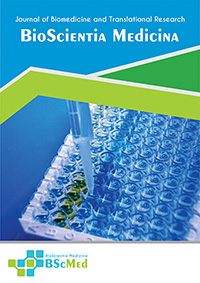Main Article Content
Abstract
Background: Regular blood donation, while crucial for healthcare systems, can lead to iron deficiency and anemia in donors. This study investigated the impact of donation frequency on iron stores and hemoglobin levels in regular blood donors.
Methods: A cross-sectional study was conducted on 82 regular blood donors at the blood transfusion unit of Dr. M. Djamil General Hospital from February to April 2024. Participants underwent pre-transfusion screening, including a questionnaire on donation frequency and iron supplement use. Blood samples were collected during donation, and serum ferritin, hemoglobin, and erythrocyte indices (MCV, MCH, MCHC) were measured if the C-reactive protein (CRP) test was negative. Data were analyzed using the Kruskal-Wallis test.
Results: The mean age of the donors was 31 years, with the majority being female (56.1%). The most common donation frequency was 6-10 times (34.15%). None of the donors reported using iron supplements. Serum ferritin levels showed significant differences among female donors based on donation frequency (p=0.004) but not among male donors (p=0.114). Hemoglobin levels also differed significantly among female donors (p=0.002), but not among male donors (p=0.213). Significant differences were observed in MCV and MCH values in both male and female donors (p<0.001 and p=0.001, respectively), but not in MCHC values (p=0.135).
Conclusion: Donation frequency significantly impacts iron stores and hemoglobin levels in female blood donors but not in male donors. Regular monitoring of iron stores, particularly in female donors, is crucial to prevent iron deficiency and anemia.
Keywords
Article Details
As our aim is to disseminate original research article, hence the publishing right is a necessary one. The publishing right is needed in order to reach the agreement between the author and publisher. As the journal is fully open access, the authors will sign an exclusive license agreement.
The authors have the right to:
- Share their article in the same ways permitted to third parties under the relevant user license.
- Retain copyright, patent, trademark and other intellectual property rights including research data.
- Proper attribution and credit for the published work.
For the open access article, the publisher is granted to the following right.
- The non-exclusive right to publish the article and grant right to others.
- For the published article, the publisher applied for the Creative Commons Attribution-NonCommercial-ShareAlike 4.0 International License.





